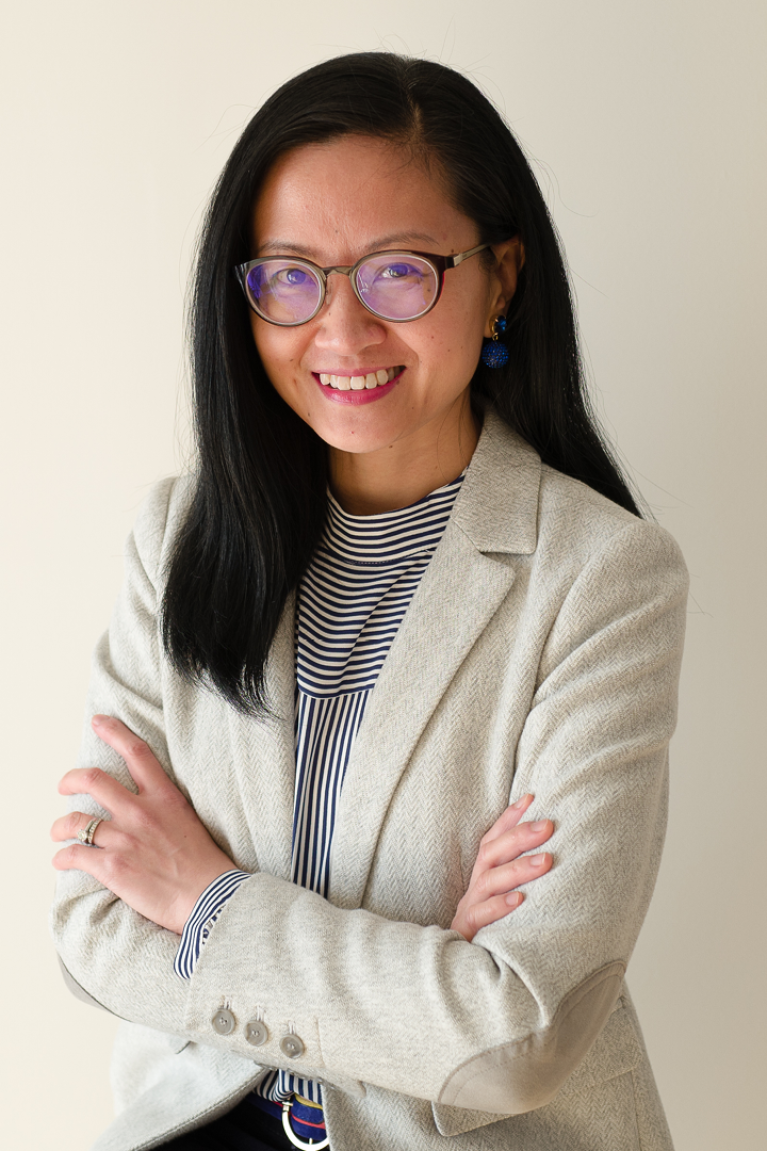One helps develop dermatologic therapies for diverse populations. Another creates innovative lenses that allow people with compromised vision to see clearly again. A third orchestrates the journey medicine takes from the lab to the manufacturing plant and into the hands of patients.
Though each of these Johnson & Johnson leaders plays a different role in the science and medical fields, all are part of a wave of women who are remaking the gender balance in healthcare—once a male-dominated industry where female scientists and researchers were the exception, and not always accepted.
Indeed, times have changed since 1908, when Edith Von Kuster became the first female scientist hired by Johnson & Johnson. At that time, jobs for women in science were so rare that they don’t even appear in historical employment data.
Today, a more level playing field in STEM is becoming the norm, and women are taking advantage of the opportunity to excel in science, medicine and tech. Between 2011 and 2021, the number of women in the STEM workforce in the U.S. increased 31%, according to a report from the U.S. National Science Foundation. (For men, the increase was 15%.) On a worldwide scale, the percentage of female STEM graduates entering into STEM fields is on the upswing, per the 2023 Global Gender Gap Report from the World Economic Forum.
In honor of International Women’s Day, meet three Johnson & Johnson trailblazers. Here’s what inspired them to go into healthcare, what it’s like being a female leader and their best advice for other women hoping to break into the field.
Daphne Chan, Ph.D., Head of Dermatology Medical Affairs, Johnson & Johnson Innovative Medicine
What inspired her to go into healthcare: Growing up, Chan had a keen interest in medicine, and she pursued a Ph.D. in clinical pharmacology. She was tempted to continue her education by going for a medical degree, but the idea of several more years of study was daunting for her and her family.
A mentor suggested another path: leaving academia for an industry setting, which could give her “broader impact and broader reach, a place where I could deliver real impact to patients,” she says. In the 19 years since she joined Johnson & Johnson, Chan has seen that impact up close. “We’ve heard from patients directly that the dermatology medications we developed have changed their lives,” she says.
What her job entails: Chan’s team currently leads the Johnson & Johnson VISIBLE study, a first-of-its-kind clinical trial dedicated to the study of psoriasis in people of color. Psoriasis can present differently and is less recognizable in darker skin tones, leading to delays in diagnosis and treatment. “We took a critical look at the work done to date in the treatment of psoriasis and realized that there’s a significant part of the population that we have not represented, both in medical education and in clinical trials,” she explains.
Chan also leads the medical dermatology therapeutic team, which studies new skin-condition medications after they reach the marketplace. Her team looks at clinical data and identifies any unmet needs reported by patients or clinicians in the real world. The team then conducts additional studies to address these unmet needs, and they also bring these insights back to Johnson & Johnson investigational programs to shape research on future therapies.
What it’s like being a female healthcare leader: “In my own experience, I’ve found the industry to be generally welcoming and supportive,” says Chan. “My husband reminded me recently that it was only a century ago when women could start voting in the U.S. And I thought, yes, not that long actually! We’ve made progress, and there are more opportunities for women than ever before.”
Advice for women going into STEM: “Think about what you want, where you want to be and who you might need to ask for help to get there,” she advises. “Asking for help makes you stronger, not weaker. And most people will want to help you.”
Kimberly Lounds Foster, Global Head of Innovative Medicines, Advanced Therapies Supply Chain
What inspired her to go into healthcare: “I grew up in a house with STEM professionals. My father was an electrical engineer, and my mother was a nurse, and watching her navigate conversations with doctors and provide clear recommendations for patients was an early inspiration,” she says.
Lounds Foster was also inspired by the passion of her “nutty professor” high school science teacher and the science-fair circuit, she recalls, “where I met academics who really stimulated my thinking and sometimes shared their research projects.”
What her job entails: Lounds Foster oversees the intricate network that bridges the world of the laboratory with that of the patient. “Once the research and development teams invent a molecule or therapy, we determine how to manufacture it in a controlled and consistent way,” she explains. The next step is overseeing the transfer of those technologies into manufacturing plants and, most importantly, “making sure larger-scale manufacturing is reliably compliant with high-quality standards before we deliver our medicines to patients.”
With more than 70 products currently in development and more than 100 commercialized products, “it is becoming more complex than ever,” says Lounds Foster. “For me, our role in supply chain is to ensure that we are at the heart of innovative medicines, making sure we deliver our therapies to patients globally.”
My sons think that managers or people in leadership positions are only women, because I’m leading a team, my boss is a woman and her boss is a woman.
What it’s like being a female healthcare leader: Lounds Foster doesn’t think gender is as much of a hurdle today, but “at several points along my career, there were few if any female role models in senior management positions, so I sought mentors and sponsors to help me navigate my career,” she explains.
Those experiences influenced her leadership style by prioritizing an inclusive environment so that everyone feels like they belong. “Everyone should establish an informal ‘board of directors’ of people who are rooting for you so that you can tap into their guidance and wisdom,” she adds.
Advice for women going into STEM: Lounds Foster believes there are endless opportunities in the life sciences industry to make a positive impact on the lives of millions of patients. “Not only is this industry professionally challenging, it’s also personally rewarding,” she says. “For all women, anything is possible today.”
Passion for mental health: “Earlier in my career, I did not have a healthy separation between my personal and professional life,” Lounds Foster says. Today, she advises younger colleagues to “view life as a marathon, where you need to pace yourself. When I find myself sprinting, I try to slow down and stay grounded.”
Carmen Canovas Vidal, Ph.D., Director, Lens Design and Vision Science, Johnson & Johnson MedTech, Vision
What inspired her to go into healthcare: From an early age, Canovas Vidal loved math and science. But getting her first pair of glasses as a kid proved to be a transformative moment. “I’m very myopic, and when I put on my first pair of spectacles at 9 years old, I told my mother, ‘I didn’t realize how pretty you are.’ That’s when I learned that fixing vision can change people’s lives.”
That lesson hit close to home again years later when her father needed intraocular lens implants (IOL) following cataract removal. The lenses he chose to restore his vision and correct astigmatism were the TECNIS Symfony Toric IOL, designed by his daughter. “When he told me that he had never seen better in his life, it was really touching,” she says.
What her job entails: Canovas Vidal oversees the Lens Design and Vision Science team, a group of scientists and engineers who design both contact lenses and IOLs used in cataract surgery.
Most recently she led the team that designed a groundbreaking alternative version of the IOLs her father opted for. Called TECNIS Eyhance IOL, these innovative lenses allow for both distance vision and a slightly extended depth of focus. The TECNIS Eyhance IOL was such a game-changer that Canovas Vidal and her team were awarded a Johnson Medal for it in 2022. A year later, it won a Red Dot Design Award, an international competition for product and industrial design.
What it’s like being a female healthcare leader: With more women going into health and technology fields, Canovas Vidal says that female leaders have become more normative. “My sons think that managers or people in leadership positions are only women, because I’m leading a team, my boss is a woman and her boss is a woman,” she says. “So they believe it’s only women who are in charge.”
She credits the increasing gender balance in the health space in part to the generations of women scientists before her. “We have a lot to thank them for,” she adds.
Advice for women going into STEM: “It’s important to not feel shy or embarrassed about showing your ideas and claiming your space,” says Canovas Vidal. “Women can sometimes hesitate to claim the value for what they’re doing, while men tend to be very good at that.”
Women in STEM fields should also consider paying it forward, Vidal adds. “It’s also about visibility. Many girls still don’t have enough exposure to how fun, how wonderful these fields can be,” she explains. “There are a lot of bright minds still to come, and society can’t afford to lose those.”









